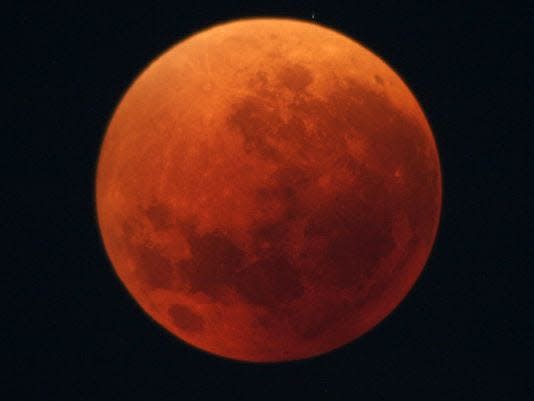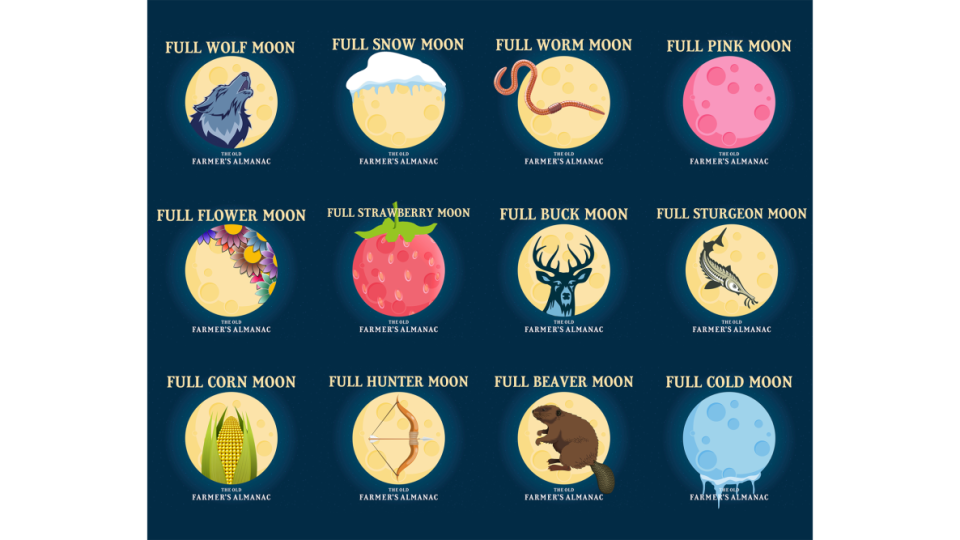Summer solstice will feature a Strawberry Moon tonight. See how, when to see it in Texas.
June's full moon will grace the skies tonight, and this one will be particularly sweet. Here's what you need to know about the Strawberry Moon.
When is the next Strawberry Moon?
June's full moon is Friday, June 21 — and it is also a Strawberry Moon.
Why is it called a Strawberry Moon?
According to the Almanac, the name "strawberry moon" was given its name by the Native American Algonquian tribes who lived in the northwestern U.S. The Ojibwe, Dakota, and Lakota tribes also used the name to mark the full moon to the harvesting of wild strawberries in June.
Other names for June's full moon from Native American tribes are the Birth Moon, Hot Moon, Blooming Moon and Green Corn Moon.
Is the Strawberry Moon pink?
No, the Strawberry Moon isn't pink. The astronomical event gets its name from the fruit, one of the berries ripening this time of year.
When is the best time to see the Strawberry Moon?
The Strawberry Moon should be visible from Texas around 8:10 p.m. Friday, according to the Old Farmer's Almanac's moon calendar.
Where should I look for the Strawberry Moon?
The moon will travel on a low arc across the sky this month, which will allow the Earth's atmosphere to reflect in the moonlight, giving it an orange or yellow hue.
The full moon is best viewed from North America on Friday when it rises in the east just before dusk. Choose a spot where you can get a low view of the eastern horizon after checking the moonrise and moonset times for your location.
The Old Farmer's Almanac has an online tool to help you find out when moonrise and moonset will occur in your area. Try searching your city or ZIP code here.
What color is the Strawberry Moon?
This month's full moon will be special because it is the one closest to the summer solstice — the solstice, marking the astronomical start of summer, will arrive at 3:51 p.m. CDT Thursday. Because the position of the full moon is always opposite to the sun and the sun will be at its highest peak, the moon will appear significantly lower in the sky than the sun ever is.
The full moon will also appear noticeably larger and lower in the sky since the summer solstice falls during the sun's yearly maximum. This is what the Old Farmers' Almanac refers to as the "Moon Illusion."
Why does the moon sometimes appear red?
You might have noticed the moon will occasionally take on a dramatic shade of orange or red in the night sky. That's because of how sunlight strikes its surface after passing through our atmosphere.
When the moon moves into the inner part of Earth's shadow, or umbra, some of the sunlight entering Earth's skies scatters before reaching the moon's surface, according to NASA.
Colors with shorter wavelengths, such as blues and violets, scatter more easily than colors with longer wavelengths, such as red and orange. The more dust or clouds in Earth's atmosphere during a lunar eclipse, the redder the moon appears.

Will there be another Blood Moon in 2024?
No. The next Blood Moon — another name for a total lunar eclipse — won't occur until March 14, 2025.
When are the full moons of 2024?
Here are the four full moons of 2024, according to EarthSky.org:
Buck Moon – July 21 – 5:17 a.m. CT
Sturgeon Moon – Aug. 19 – 1:26 p.m. CT (Full Super moon)
Harvest Moon – Sept. 17 – 9:34 p.m. CT (Full Super moon on 18th)
Hunter's Moon – Oct, 17 – 6:26 a.m. CT (Full Super moon)
Beaver Moon – Nov. 15 – 3:29 p.m. CT (Full Super moon)
Cold Moon – Dec. 15 – 3:02 p.m. CT
Almanac
Embedded content: https://www.almanac.com/sites/default/files/styles/or/public/image_nodes/full-moon-names-padding-2400px.png?itok=EXGfrJUC
June 2024 astronomical events
According to NASA, skywatchers should keep these dates in mind for June 2024:
June 24: Jupiter is visible low in the east before sunrise. Look for the bright planet about 10 degrees above the horizon in this final week of June, forming a line with Mars and Saturn that stretches toward the south.
June 27: Look for the moon rising in the east with Saturn around midnight. By dawn this morning, you'll find them high in the southern sky. They will seem close together — close enough to appear in the same field of view through binoculars.
— USA TODAY reporter Janet Loehrke contributed to this report.
This article originally appeared on Austin American-Statesman: June 2024 full Strawberry Moon tonight, on summer solstice


